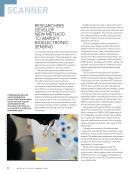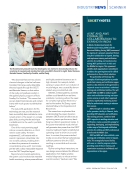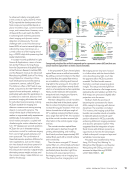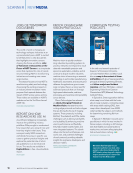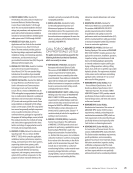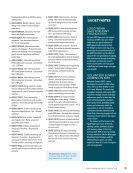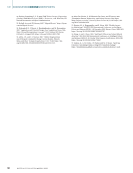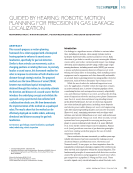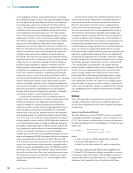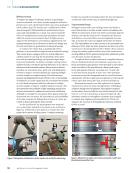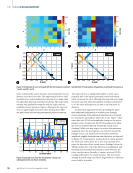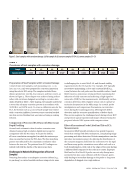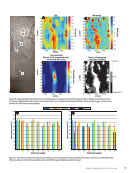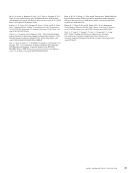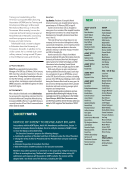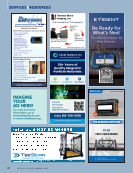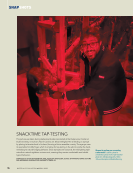To integrate the source localization with this movement
strategy for a mobile platform, microphones were positioned
on top of the robotic dog, as shown in Figure 2b. The path
planning strategy is shown in Figure 8a. Initially, the robotic
dog records the first measurement at the starting point. Next,
it performs a sweep of the environment by rotating around a
fixed point in 15° increments to identify the direction of the
source. Following this, the robotic dog moves horizontally
toward the estimated source, either to the left or right. At the
new position, a second data point is collected, and the source
location is estimated. It is important to note that we assume
the source is always in front of the robot.
To assess the effectiveness of this strategy, we conducted
two experiments. In the first experiment, the robot took an
initial sample at a starting point and then collected two addi-
tional samples at random locations within a grid, maintaining
a consistent orientation throughout. Using the gathered data,
the hyperbolic equation (Equation 7) was solved to estimate
the source location.
In the second experiment, the robot first captured an initial
sample and then began rotating to gather data. When the
TDOA reached zero, the robot identified the source direction.
With the initial sample and direction established, the robot
moved horizontally to a new position to obtain a second TDOA
for source location estimation. It’s important to note that the
robot maintained the same orientation when taking the second
TDOA as it did for the first, as shown in Figure 9. Additionally,
the robotic dog’s rotational and translational movements
were executed manually rather than autonomously, with
the minimum step size for rotation being 15°. Figure 9 shows
the robotic dog’s motion trajectory for random and strategic
walking.
20
–2
–1
0
1
2
40 60 80 100 120 140 160
Direction θ (degrees)
180°
210° 330°
300° 240°
150°
120°
30°
60°
90°
0.8
0.6
0.4
0.2
1
270°
0°
Amplitude (v)
Leakage
TDOA trend
Leakage
Figure 7. Angle using robotic arm versus (a) variation of time difference
of arrival (TDOA) and (b) amplitude variation.
Record of the first measurement
Find sound source direction of arrival (DOA)
While (TDOA ≠ 0)
keep rotating about Z axis
if (TDOA =0)
DOA =current microphone orientation (θ)
If (0 DOA 90)
motion direction =right
If (90 DOA 180)
motion direction =left
Else
either direction is fine
If TDOA 0
motion direction =right
If T DOA 0
motion direction =left
Else
either direction is fine
Lateral motion direction
Lateral motion direction
Record of the second measurement
Record of the second measurement
Record of the first measurement
Estimate the source location
Estimate the source location
Figure 8. (a) Proposed path planning algorithm and (b) updated path planning algorithm for the robotic dog.
A P R I L 2 0 2 5 • M AT E R I A L S E V A L U AT I O N 57
TDOA
(s
×10–4)
strategy for a mobile platform, microphones were positioned
on top of the robotic dog, as shown in Figure 2b. The path
planning strategy is shown in Figure 8a. Initially, the robotic
dog records the first measurement at the starting point. Next,
it performs a sweep of the environment by rotating around a
fixed point in 15° increments to identify the direction of the
source. Following this, the robotic dog moves horizontally
toward the estimated source, either to the left or right. At the
new position, a second data point is collected, and the source
location is estimated. It is important to note that we assume
the source is always in front of the robot.
To assess the effectiveness of this strategy, we conducted
two experiments. In the first experiment, the robot took an
initial sample at a starting point and then collected two addi-
tional samples at random locations within a grid, maintaining
a consistent orientation throughout. Using the gathered data,
the hyperbolic equation (Equation 7) was solved to estimate
the source location.
In the second experiment, the robot first captured an initial
sample and then began rotating to gather data. When the
TDOA reached zero, the robot identified the source direction.
With the initial sample and direction established, the robot
moved horizontally to a new position to obtain a second TDOA
for source location estimation. It’s important to note that the
robot maintained the same orientation when taking the second
TDOA as it did for the first, as shown in Figure 9. Additionally,
the robotic dog’s rotational and translational movements
were executed manually rather than autonomously, with
the minimum step size for rotation being 15°. Figure 9 shows
the robotic dog’s motion trajectory for random and strategic
walking.
20
–2
–1
0
1
2
40 60 80 100 120 140 160
Direction θ (degrees)
180°
210° 330°
300° 240°
150°
120°
30°
60°
90°
0.8
0.6
0.4
0.2
1
270°
0°
Amplitude (v)
Leakage
TDOA trend
Leakage
Figure 7. Angle using robotic arm versus (a) variation of time difference
of arrival (TDOA) and (b) amplitude variation.
Record of the first measurement
Find sound source direction of arrival (DOA)
While (TDOA ≠ 0)
keep rotating about Z axis
if (TDOA =0)
DOA =current microphone orientation (θ)
If (0 DOA 90)
motion direction =right
If (90 DOA 180)
motion direction =left
Else
either direction is fine
If TDOA 0
motion direction =right
If T DOA 0
motion direction =left
Else
either direction is fine
Lateral motion direction
Lateral motion direction
Record of the second measurement
Record of the second measurement
Record of the first measurement
Estimate the source location
Estimate the source location
Figure 8. (a) Proposed path planning algorithm and (b) updated path planning algorithm for the robotic dog.
A P R I L 2 0 2 5 • M AT E R I A L S E V A L U AT I O N 57
TDOA
(s
×10–4)











